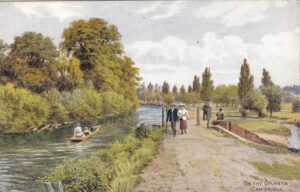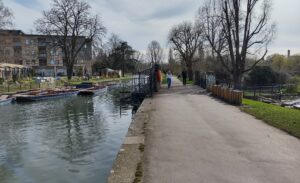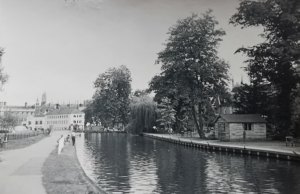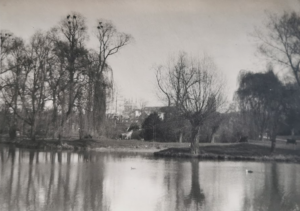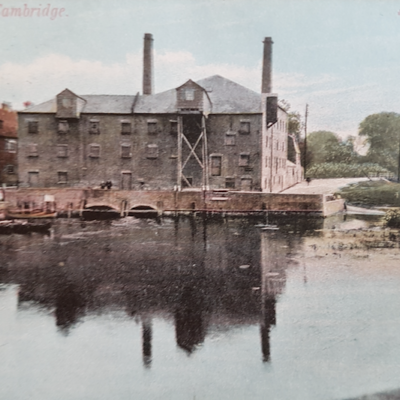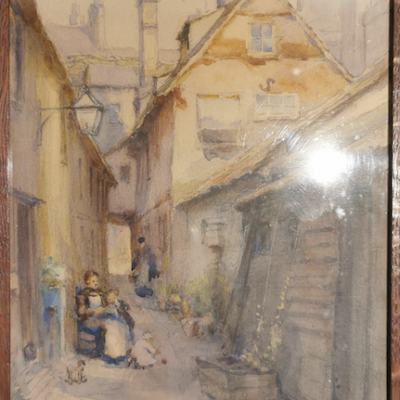Search by topic
- archaeology
- Building of Local Interest
- chapel
- charity
- church
- crime
- dressmaker
- fire
- Great Eastern Railway
- Listed building
- Mapping Relief
- medieval
- oral history
- poverty
- Public House
- Religious House
- Roman
- scholar
- school
- Then and Now
- tudor
- women
- work
- world war one
- world war two
Search by text
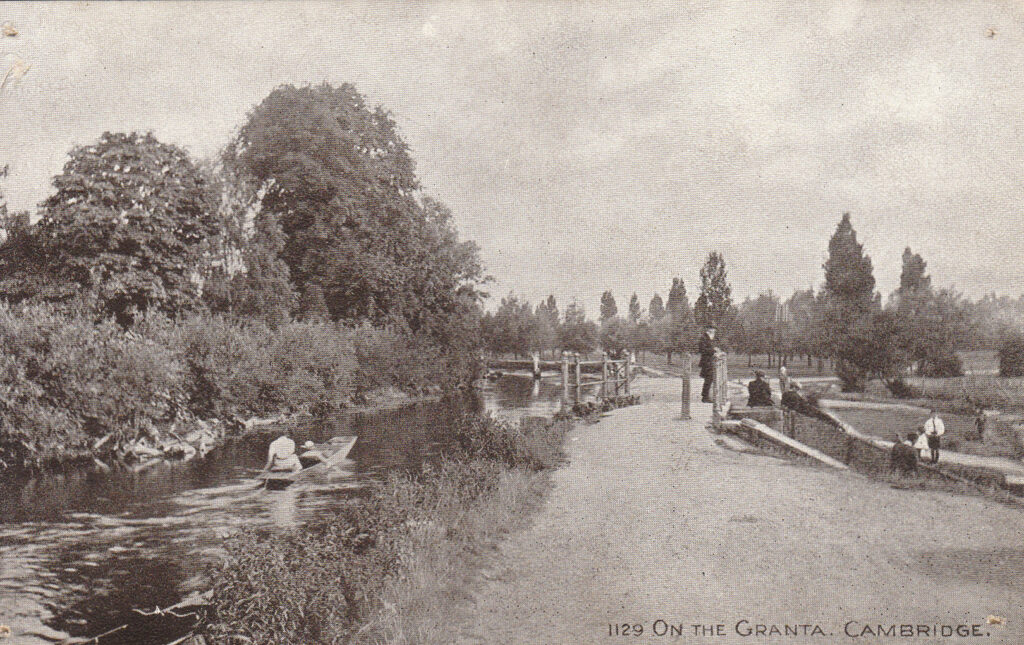 Footpath next to Laundress Green (undated)
Footpath next to Laundress Green (undated)Laundress Green, Cambridge
History of Laundress Green
M E Keynes wrote in A House By the River in 1976: Laundress Green is the small triangular piece of common-land seen from Silver Street bridge to the right of the Mill pool. The name presumably originated in the Green’s use as a drying-ground for a number of University laundries and for washer-women living in the two parishes of St Botolph and St Mary the Less. On Mondays and Tuesdays the ground was free from grazing animals, so that women from Granta Place and Mill Lane could safely hang out their laundry there to dry. For this privilege they probably had to pay a shilling a year to the Corporation and put up their own posts, as they did for a similar use of Coe Fen near by. In Victorian and Edwardian days, the Green used to be gay with washing fluttering and dancing in the breeze but the custom has long since died out. During spring-cleaning, however, until more recent times, carpets and mats were still brought there for beating; probably the use of vacuum cleaners put an end to this custom too.
1887 The Corporation planned to build public bathing-houses to commemorate the Queen’s Jubilee. Prof George Darwin wrote a letter of objection. The sit would have been immediately opposite land which he leased. It was not until 1929 that the corporations’s first bath house was opened in Mill Road.
Contribute
Do you have any information about the people or places in this article? If so, then please let us know using the Contact page or by emailing capturingcambridge@
License
This work is licensed under CC BY-NC-SA 4.0





